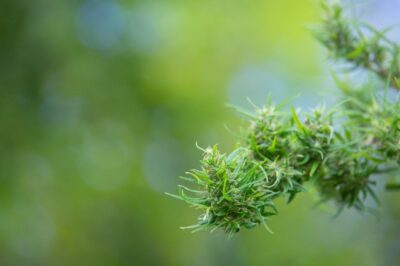Do you know what CBD means? It is an active chemical known as a cannabinoid. This chemical is available in marijuana and hemp plants. It has psychoactive properties but can’t deliver the “high” feeling. Still, researchers continuously try to find various effects on the body, including harmful side effects.
In this article, we will elaborate on the meaning of CBD and its various effects on the body, including harmful side effects and many others.
What CBD Means?
A Brief Note:
Marijuana and hemp plants are the main sources of CBD or Cannabidiol. This effective chemical is extracted from the leaves and flowers. Many studies are being conducted to determine its benefits and safety. There are 113 identified cannabinoids in cannabis plants along with tetrahydrocannabinol (THC). This herbal dietary supplement is used to treat multiple forms of epilepsy that were discovered in 1940.
Usual Form of CBD:
- Oil-form is an effective anti-seizure medication.
- A vaporized liquid form.
- An oil-based capsule.
- Food, drinks, and beauty products.
Available Shape For Treatment:
Cannabidiol is available in multiple ways for the treatment of human beings including —
- Inhaling cannabis smoke or vapor.
- Swallowing by mouth.
- Through the use of an aerosol spray into the cheek.
Beneficial Effects On The Human Body:
This active chemical was first used in 2018 to treat Lennox Gastaut and Dravet syndrome. These are two different kinds of epilepsy. Also, it is used for various treatments including
- Parkinson’s disease
- Schizophrenia.
- Diabetes.
- Multiple sclerosis.
- Depression and Anxiety.
Health Risks Of Consuming CBD:
- Dry mouth.
- Diarrhea
- Reduced appetite
- Drowsiness.
- Fatigue.
- Liver Injury.
- It can impact other medications’ effectiveness.
- It can damage fertility in males.
Approved CBD Products:
Marketing restrictions prohibit adding this chemical to food or labeling it as a dietary supplement. The United States Food and Drug Administration (FDA) has approved only Epidiolex, a prescription drug used to treat seizures. This product is associated with Dravel Syndrome, Lennox Gastaut syndrome, or tuberous sclerosis complex.
Precautions:
Cannabidiol may help to treat symptoms relating to some health conditions like pain, depression, and more. However, the research is still in the early stages. More studies are needed to confirm the effectiveness of CBD-containing medicines.
Additionally, a large difference is found between cannabidiol used in clinical trials and stores. Some products contain very little cannabidiol and other contains illegal drugs or even alcohol. Talk to your doctor before using any product containing this chemical.
The Bottom Line:
Much research is going on to define what CBD means? CBD is becoming popular for various health conditions like depression, anxiety, or diabetes. As stated earlier, it is an effective chemical called cannabinoids that are available in the cannabis plant. Cannabidiol or CBD products are not FDA-approved, except for the prescription medication Epidiolex. However, more clinical research is required to specify whether cannabidiol products are safe and effective for various health conditions.
How Many Forms Of Cannabinoids Identified?
More than 100 forms of cannabinoids have been identified.
What Is The Correct Dose Of CBD?
No adequate information is available to show, how much cannabidiol can be consumed and for how long.
How To Convert CBD To THC?
Partial transformation occurs into THC when CBD is heated to 250 – 300°C.
What Is The Difference Between THC And CBD?
Both CBD and THC are the two most active compounds produced by the cannabis plant, but the first one will not get you as high and raise your heart rate as THC.
What Does THC Stand For?
THC stands for tetrahydrocannabinol.
Is There Any Difference Between Marijuana And Cannabis?
Cannabis refers to all products derived from the plant cannabis sativa and marijuana refers to products from the plant cannabis sativa that contains substantial amounts of THC.









